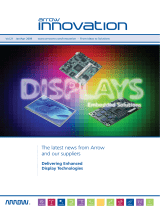Page is loading ...

Home » ST » ST VL53L8CX Ranging Sensor Module User Manual
Contents
1 ST VL53L8CX Ranging Sensor Module
2 Introduction
3 Thermal design basics
4 Thermal resistance of PCB or flex
5 Layout and thermal guidelines
6 IMPORTANT NOTICE – READ
CAREFULLY
7 Documents / Resources
7.1 References
8 Related Posts
ST VL53L8CX Ranging Sensor Module
Introduction
When used in continuous mode, the VL53L8CX module typically consumes 215 mW of power. Consequently, it
ST VL53L8CX Ranging Sensor Module User Manual
Manuals+ — User Manuals Simplified.

requires careful thermal management to ensure optimum device performance and to avoid overheating.
Table 1. Main thermal parameters
Parameter Symbol Min. Typ. Max. Unit
Power consumption P — 215 (1) 320 mW
Junction temperature (2) TJ — — 110 °C
Die thermal resistance θdie — — 43 °C/W
Operating temperature range T -30 25 85 °C
1. AVDD = 2.8 V and IOVDD = 1.8 V of typical current consumption.
2. To prevent thermal shutdown, the junction temperature must be kept below 110 °C.
Thermal design basics
The symbol θ is generally used to denote thermal resistance which is a measure of a temperature difference by
which an object or material resists a heat flow. For example, when transferring from a hot object (such as silicon
junction) to a cool one (such as module backside temperature or ambient air).
The formula for thermal resistance is shown below and is measured in °C/W:
θ = ΔT/P
Where ΔT is the rise in junction temperature and P is the power dissipation. So, for example, a device with a
thermal resistance of 100 °C/W exhibits a temperature differential of 100°C for a power dissipation of 1 W as
measured between two reference points. The formula is as follows:
θpcb = TJ − TA ÷ P − θdie
θpcb = 110 − TA ÷ P − 43
Where:
TJ is the junction temperature
TA is the ambient temperature
θdie is the die thermal resistance

θpcb is the thermal resistance of the PCB or flex
Thermal resistance of PCB or flex
The maximum permitted junction temperature of the VL53L8CX is 110°C. The maximum permitted PCB or flex
thermal resistance is calculated as shown below. This calculation is for a power dissipation of 0.320 W, and
device operation at 85°C (worst case scenario of the maximum specified ambient temperature).
θpcb = TJ − TA ÷ P − θdie
θpcb = 110 − 85 ÷ 0.320 − 43
θpcb = 35°C/W
Note: To ensure that the maximum junction temperature is not exceeded, and to ensure optimum module
performance, do not exceed the above target thermal resistance. For a typical system dissipating 320 mW, the
maximum temperature rise is < 11°C. This is recommended for optimum performance of the VL53L8CX
Layout and thermal guidelines
Use the following guidelines when designing the module PCB or flex:
Maximize the copper cover on the PCB to increase the thermal conductivity of the board.
Use the module, thermal pad B4 shown in Figure 2. VL53L8CX pinout and thermal pad. Add a single large
rectangle of solder paste. It should be the same size as the thermal pad (eight rectangles) as per Figure 3.
Recommendation for the thermal pad and via on the PCB. STMicroelectronics recommends to stitch the eight
vias from top to bottom, so the bottom mask is open and the pad is exposed.
Use wide tracking for all signals particularly power and ground signals. Track and connect them into adjacent
power planes where possible.
Add heat sinking to the chassis or frames to distribute heat away from the device.
Do not place next to other hot components.
Place the device in a low power state when not in use.

Revision history
Date Version Changes
30-Jan-2023 1 Initial release
IMPORTANT NOTICE – READ CAREFULLY
STMicroelectronics NV and its subsidiaries (“ST”) reserve the right to make changes, corrections, enhancements,
modifications, and improvements to ST products and/or to this document at any time without notice. Purchasers
should obtain the latest relevant information on ST products before placing orders. ST products are sold pursuant
to ST’s terms and conditions of sale in place at the time of order acknowledgment. Purchasers are solely
responsible for the choice, selection, and use of ST products and ST assumes no liability for application
assistance or the design of purchasers’ products. No license, express or implied, to any intellectual property right
is granted by ST herein. Resale of ST products with provisions different from the information set forth herein shall
void any warranty granted by ST for such product. ST and the ST logo are trademarks of ST. For additional
information about ST trademarks, refer to www.st.com/trademarks. All other product or service names are the
property of their respective owners. Information in this document supersedes and replaces information previously
supplied in any prior versions of this document.

AN5897 – Rev 1 – January 2023
For further information contact your local STMicroelectronics sales office.
www.st.com
Documents / Resources
ST VL53L8CX Ranging Sensor Module [pdf] User Manual
VL53L8CX, Ranging Sensor Module, VL53L8CX Ranging Sensor Module, Sensor Module, Mo
dule
References
STMicroelectronics: Our technology starts with you
STMicroelectronics Trademark List - STMicroelectronics
Manuals+,
/
